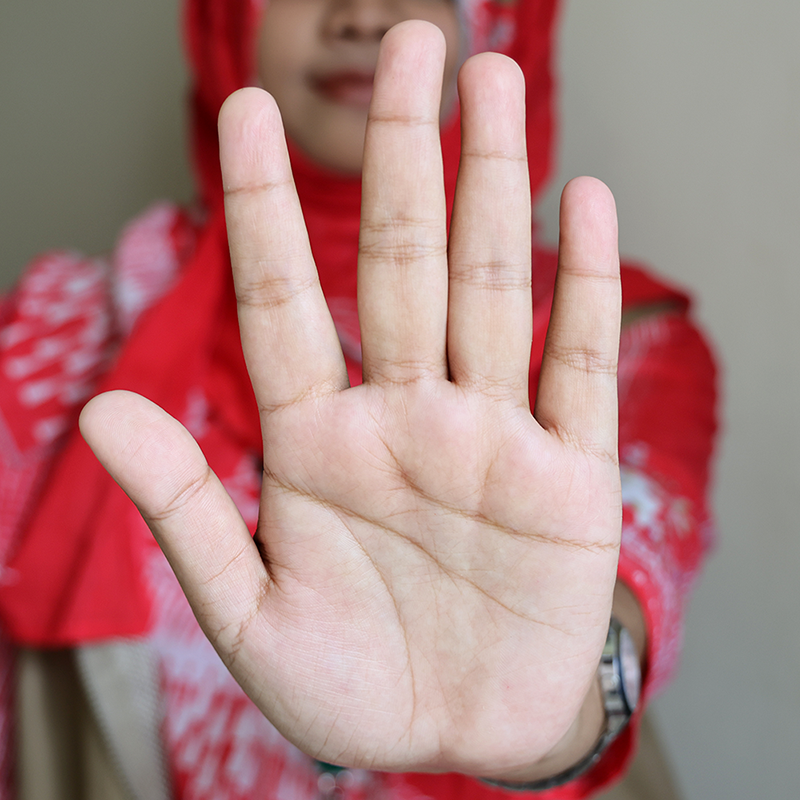With a staggering 60 per cent of women experiencing online harm globally, technology-facilitated gender-based violence (TFGBV) is a critical issue requiring urgent attention. The online space mirrors the risks of real-world violence, posing unprecedented threats to the dignity, safety and fundamental rights of women and girls.
In Asia, a UNFPA study, conducted in partnership with the University of Melbourne, shines a spotlight on how digital spaces have become weaponized for abuse, with devastating impacts for women and girls. From online stalking to harassment, online gender-based violence represents a growing crisis.
Building on the study, UNFPA organized a Asia Regional Symposium in October 2024 where digital rights activists, service providers, researchers and civil society organizations across 14 Asian countries gathered to discuss the key trends and patterns of online gender-based violence in the region. Here, we take a look at seven trends that emerged from the discussions, demanding urgent action.
- Digital abuse has no expiration date
Unlike traditional forms of harassment, digital abuse can spread widely and exist indefinitely online. "You can take images or videos down, but then you always have, there's always the possibility of them popping up. Not today, not tomorrow, maybe in five years' time," said a civil society representative from Sri Lanka. This perpetual nature of digital abuse means survivors face ongoing trauma and anxiety about when and where abusive content might resurface.
- Public voices are under attack
Women in public-facing roles face sophisticated and coordinated attacks across multiple platforms. Journalists, politicians and activists routinely experience gendered disinformation campaigns and targeted harassment designed to discredit and silence them, with severe economic consequences. Even women who simply share opinions on social media face heightened risks, reducing their participation in public discourse.
- Online threats become offline violence and vice versa
Online violence doesn't stay confined to screens and keyboards. For example, when perpetrators share victims' personal information online (known as doxing), it enables stalking and physical violence. This pattern appears in many contexts, from intimate partner violence to political activism. "Because a lot of cases of killings of activists and civilians who have been active in like civil society, oftentimes, these are preceded by some sort of online red tagging," said a journalist from the Philippines. During politically charged events like elections and protests, this online-to-offline escalation becomes even more dangerous.
- Minority and religious groups face further digital violence
The impact of online gender-based violence is magnified for those who face multiple layers of discrimination. In digital spaces, religious and ethnic minority women face heightened targeting, where anonymous perpetrators easily exploit and amplify existing prejudices. LGBTIQ+ people face unique risks too; many rely on digital spaces for connection and expression, particularly in contexts where they cannot be open about their identity offline. Yet this very visibility increases their vulnerability to abuse.
- The digital divide increases vulnerability
The digital divide in Asia creates a dangerous paradox for women and girls, shaped by local contexts and cultural norms. Even those with limited access to technology face abuse, through basic mobile phones and text messages. Yet they lack the digital literacy skills to protect themselves. In South Asia, where around three in five young women are offline compared to just one in three young men, this gap is particularly stark. Without meaningful access to technology, women struggle to recognize abuse and seek help, creating a double burden: those most vulnerable to online gender-based violence are often the least equipped to combat it.
- Current actions are failing survivors
When survivors seek help, the response systems are failing them. Police often lack the training and resources to handle digital abuse, while courts can take years to resolve cases. Many countries do not even have laws against online gender-based violence, and where laws exist, they are rarely enforced. "Recording of these sorts of incidents, they're done manually… So, they are not really recorded, they are not really inputted into a wider database," said a civil society representative from the Philippines. Broken systems leave survivors with nowhere to turn.
- Social media companies' inadequate response to abuse
Tech giants are failing to protect users in Asia. When survivors report abuse in local languages, they often hit a wall; platforms' algorithms mainly work in English and lack moderators who understand local contexts and cultures. For survivors seeking help, it is just another dead end.

Online violence: How can we stop it from becoming the new norm?
Online gender-based violence has significant psychological, physical, economic and social impacts on victims, but there is a widespread lack of understanding. Addressing the complex challenges of online gender-based violence requires coordinated, localized approaches across community, industry and government levels, including:
- Stronger laws and policies to protect against online gender-based violence
- Better training for frontline service providers on responding to online gender-based violence survivors
- New youth prevention programs focused on digital safety and gender equity education
- Multi-stakeholder partnerships with tech companies to create safer online environments
The virtual world is real. And so is the violence that occurs within it. Join UNFPA in creating a safer digital future where everyone can use technology to participate and speak up, without fear of violence or abuse. It is simple: Digital spaces must empower, not endanger.
Read the full report and learn more about this growing crisis.
Related resources:
- Understanding technology-facilitated gender-based violence in Asia: A qualitative study
- The digital frontline: Protecting women and girls from online violence 16 Days of activism against gender-based violence
- Asia Regional Technology-Facilitated Gender-Based Symposium Report
- UNFPA resources on technology-facilitated gender-based violence
- A framework for technology-facilitated gender-based violence programming



